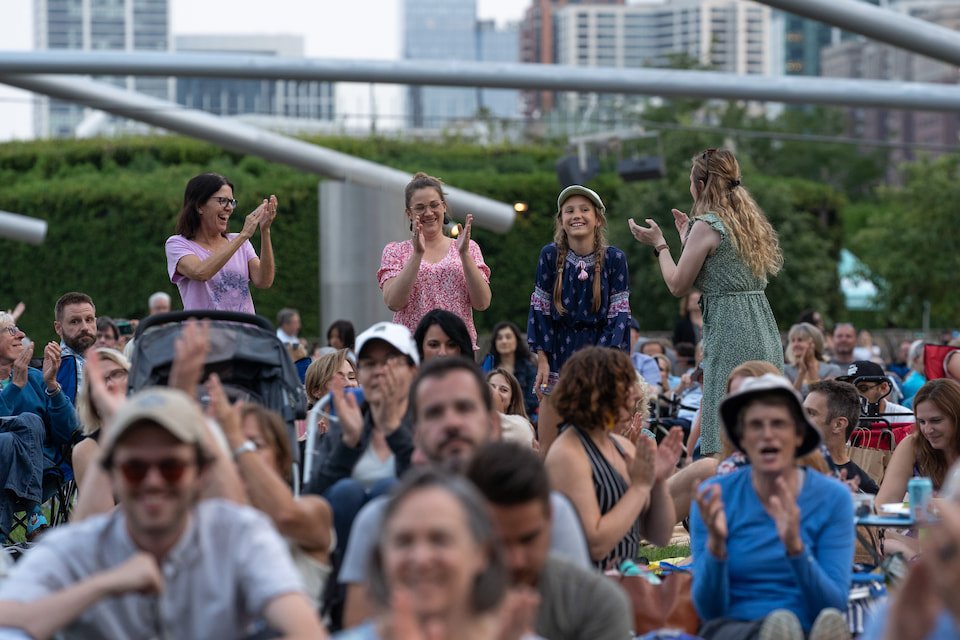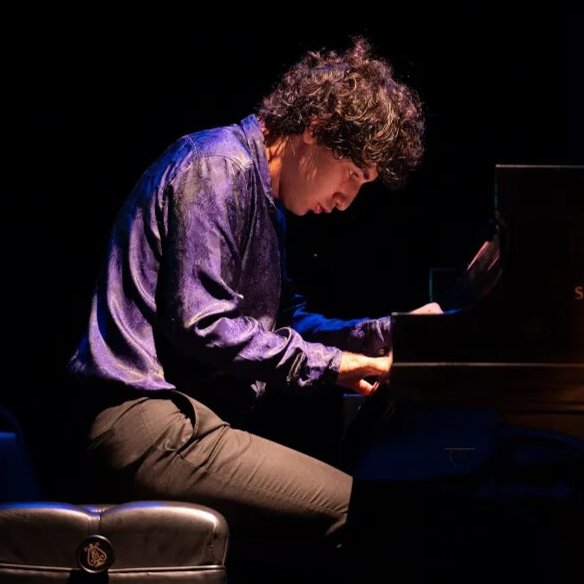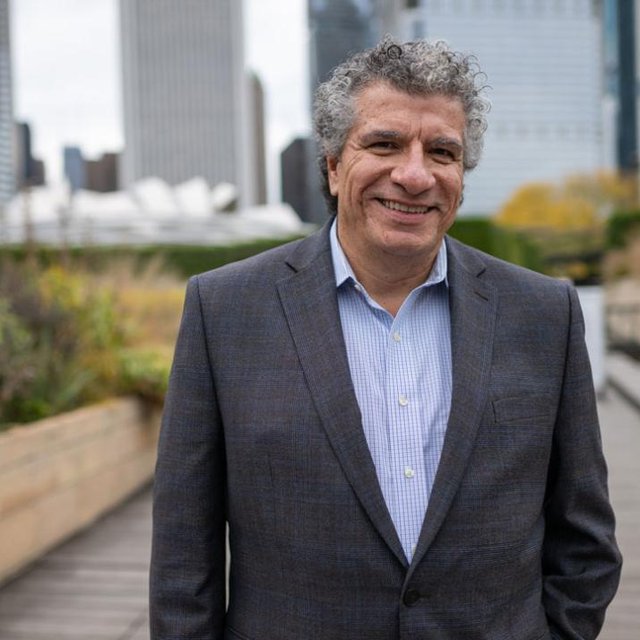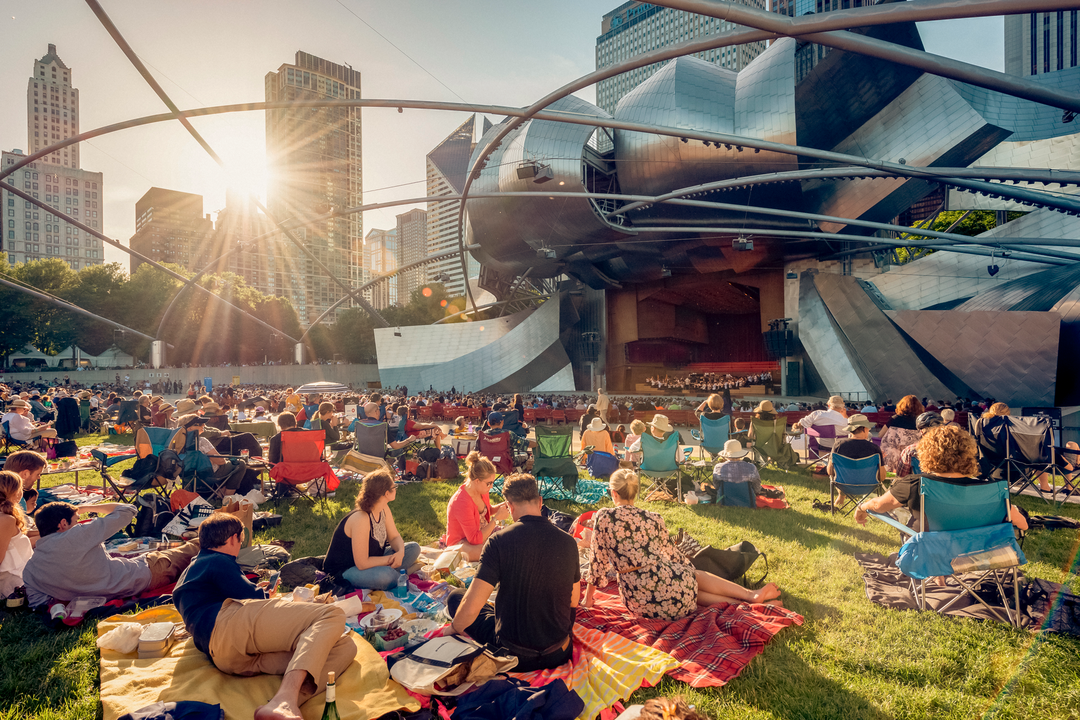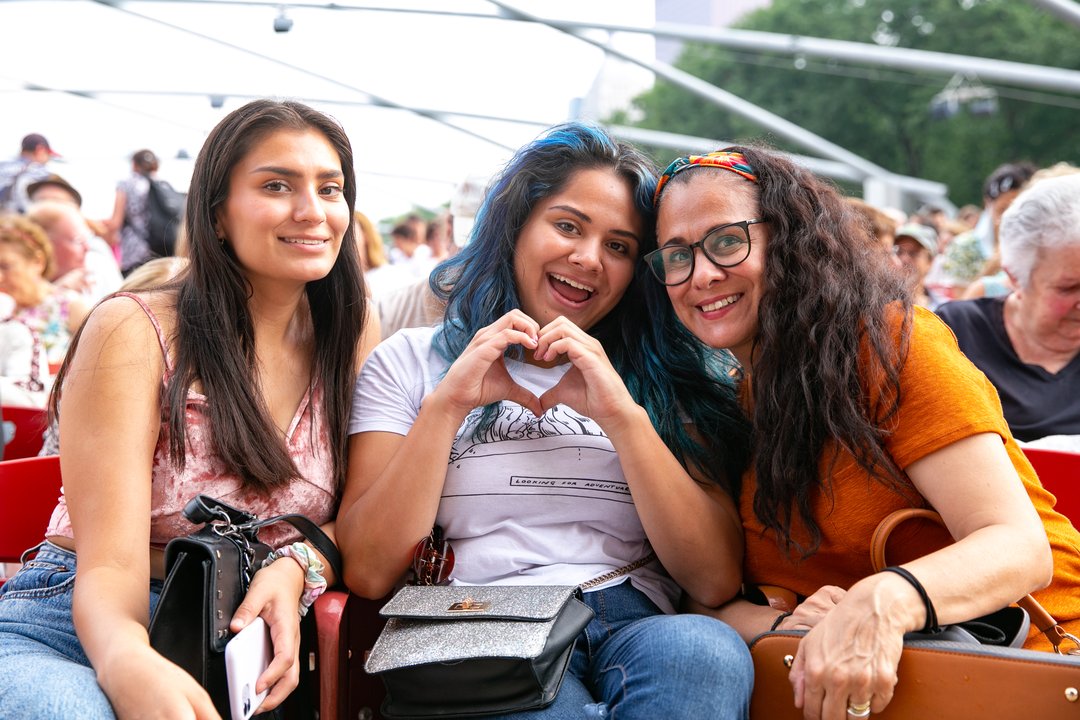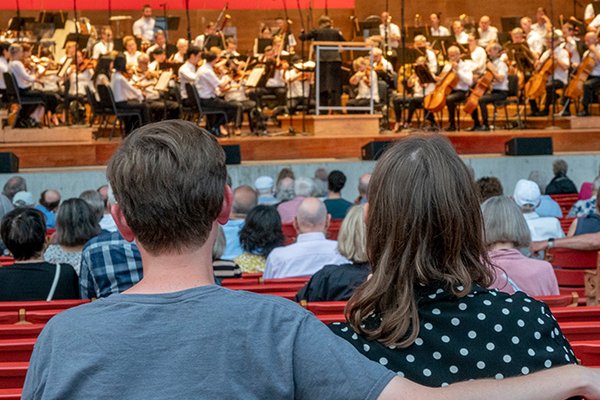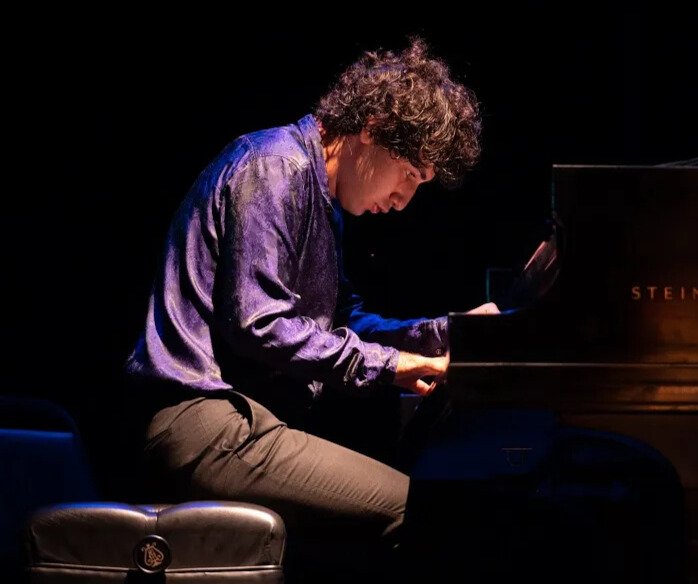
Ravel Boléro
Program
Gioachino Rossini Overture to The Barber of Seville (8 mins)
Manuel de Falla Nights in the Gardens of Spain (23 mins)
In the Gardens of the Generalife
A Dance Is Heard in the Distance
In the Gardens of Sierra de Córdoba
Franz Liszt/orch. Ferruccio Busoni Rhapsodie espagnole (15 mins)
Introduction
Folies d'Espagne: Andante moderato
Jota aragonesa: Allegro
Un poco meno allegro – Allegretto piacevole
Maurice Ravel Boléro (13 mins)
-
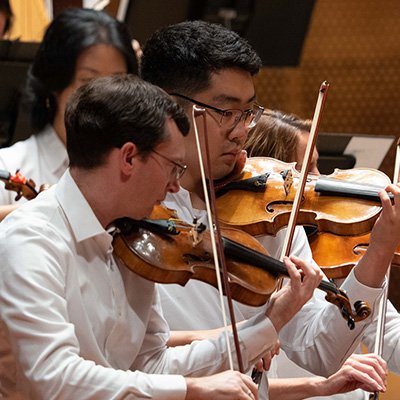
Grant Park Orchestra
Orchestra
-
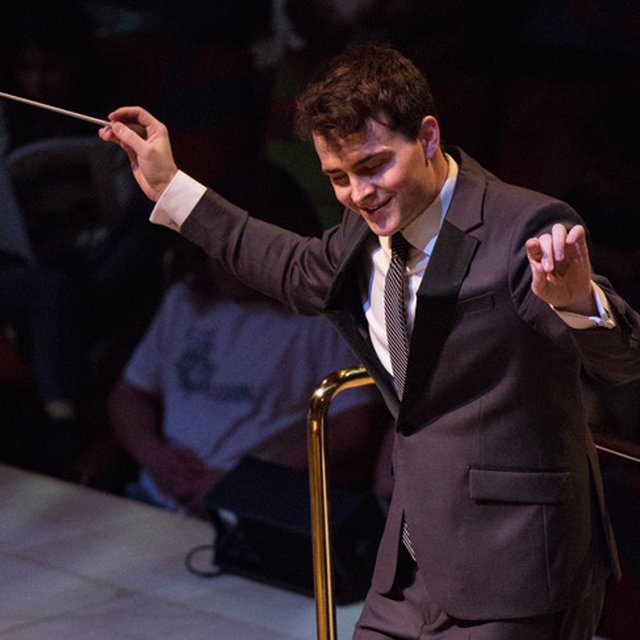
Lee Mills
Conductor
Program Notes
Gioachino Rossini (1792–1868)
Overture to Il barbiere di Siviglia (The Barber of Seville) (1816)
Scored for: two flutes including piccolo, two oboes, two clarinets, two bassoons, two French horns, two trumpets, three trombones, timpani, percussion, and strings
Performance time: 8 minutes
First Grant Park Orchestra performance: July 19, 1935; Isaac Van Grove, conductor
Gioachino Rossini is especially known for his melodically enchanting and rhythmically vivacious overtures. Between 1810 and 1829, Rossini wrote 39 operas, both serious and comic and in both Italian and French, churning out multiple operatic hits each year. Many of his operas are still mainstays of the repertoire today, but his overtures have gained a second life on the concert stage and in popular culture. Perhaps the most famous of these is the overture to The Barber of Seville, thanks in part to Looney Tunes’ 1950 cartoon short Rabbit of Seville.
Giuseppe Verdi, Rossini’s successor as master of Italian opera, considered The Barber of Seville the greatest comic opera ever written. Composed in 1816 in just two weeks, the opera sparkles with Rossini’s signature wit and bel canto vocalism. Contrary to what one would expect, the overture does not contain any of the melodic themes of the opera. That is because it was recycled from two earlier operas, Aureliano in Palmira and Elizabeth, Queen of England. Nevertheless, it has now become intrinsically linked with The Barber of Seville, serving as a perfect prelude to the comedic hijinks and love story to come.
Manuel de Falla (1876–1946)
Noches en los jardines de España (Nights in the Gardens of Spain) (1909)
Scored for: three flutes including piccolo, three oboes including English Horn, two clarinets, two bassoons, four French horns, two trumpets, three trombones, tuba, timpani, percussion, harp, celesta, strings, and solo piano
Performance time: 23 minutes
First Grant Park Orchestra performance: June 29, 1994; Christopher Wilkins, conductor and Jorge Frederico Osorio, piano
Before the outbreak of World War I, Spanish composer Manuel de Falla spent seven fruitful years in Paris, socializing and collaborating with such influential composers as Ravel, Stravinsky, Albéniz, and Debussy. Falla especially admired Debussy, lauding his work as “music’s point of departure as an emancipated art.” Debussy’s sound world and approach to form would influence Falla’s compositional style, which blends Spanish musical elements with tenets of French Impressionism.
Debussy’s influence is manifest in Falla’s sumptuous work for piano and orchestra, Noches en los jardines de España (Nights in the Gardens of Spain), in its orchestration, use of whole tone chords, and conception as a set of nocturnes. That said, its grounding in the rhythms and melodies of Andalusian folk music makes it entirely Falla’s own. Falla originally conceived the work in 1909 as a set of four nocturnes for solo piano. However, Spanish pianist Ricardo Viñes—the work’s eventual dedicatee—suggested he expand it to include orchestra. Falla took his advice and eventually completed Noches in 1915 after returning to Spain during the war.
Although scored for solo piano and orchestra, Noches is not really a concerto. The piano is more integrated into the orchestral texture than in a typical concerto, where the soloist is often pitted against the orchestra in a “battle” of sorts. Plus, the movements are not structured like those of a concerto but are more freeform. Falla called them “symphonic impressions” that “evoke places, sensations, and sentiments” of his Andalusian homeland. Still, Falla cautioned against thinking of the work as explicitly programmatic: “The music has no pretensions to being descriptive; it is merely expressive. But something more than the sound of festivals and dances has inspired these ‘evocations in sound,’ for melancholy and mystery have their part also.”
The first movement, “En el Generalife,” takes us to the Generalife gardens outside the Alhambra, the great Moorish palace and fortress in Granada. Falla captures the region’s confluence of Arab and Spanish cultures with evocations of flamenco and guitar music, which contrast with more stentorian orchestral episodes that might represent the Sultan presiding from the palace. The second movement, “Danza Lejana” (“A Distant Dance”), does not suggest a specific place so much as the passion of flamenco. The darkly sensual dance crashes straight into “En los Jardines de la Sierra de Córdoba.” Again, the spirit of Spanish dance permeates the whole movement, with the piano’s rapid repeated notes imitating guitar tremolos.
Franz Liszt (arranged as a concert piece for piano and orchestra by Ferruccio Busoni) (1811–1886)
Rhapsodie espagnole, S. 254 (1858)
Scored for: three flutes including piccolo, two oboes, two clarinets, two bassoons, four French horns, two trumpets, three trombones, tuba, timpani, percussion, strings, and solo piano
Performance time: 15 minutes
First Grant Park Orchestra performance: July 22, 1945; Nicolai Malko, conductor and Beatrice Eppinelle, piano
“The musical sun, which set at Liszt’s death, shines again through Busoni,” German writer and editor Adolf Mirus wrote in 1901. Ferruccio Busoni (1866–1924) was one of the greatest promotors of Franz Liszt’s legacy. A prolific writer and thinker as well as a pianist and composer, Busoni helped to change the prevailing attitude toward Liszt in the early 20th century. At the time, Liszt was primarily remembered as a piano virtuoso, but as a composer, he was overshadowed by Wagner. In programming, transcribing, and producing authoritative editions of Liszt’s music, Busoni hoped to reveal and expand upon Liszt’s revolutionizing of harmony, form, and pianistic technique.
Busoni emulated Liszt in several ways, both in his piano technique and overarching ideas regarding music. He and Liszt considered compositions living entities subject to revision or transformation, hence the multiple versions of many of Liszt’s works and both composers’ liberal approach to transcription, which blurs the line between arranging and composing. One such example is Busoni’s arrangement of Rhapsodie espagnole (1894) for solo piano and orchestra. It is based on Liszt’s solo piano piece Rhapsodie espagnole S254/R90 “Folies d’Espagne et Jota aragonesa” (1855), itself a substantial reworking of an earlier piece on Spanish themes from 1845. In supporting the piano soloist with orchestral textures, Busoni’s arrangement expands the piano’s dynamic range and brings out the Spanish character of the piece by including tambourines and castanets.
Maurice Ravel (1875–1937)
Boléro (1928)
Scored for: three flutes including piccolo, three oboes including English Horn and oboe d'amore, three clarinets including bass clarinet, three bassoons including contrabassoon, four French horns, four trumpets, three trombones, tuba, timpani, percussion, harp, celesta, soprano saxophone, tenor saxophone, and strings
Performance time: 13 minutes
First Grant Park Orchestra performance: September 2, 1937; George Dasch, conductor
“I’ve written only one masterpiece—Boléro,” Maurice Ravel once said. “Unfortunately, there’s no music in it.” Although Ravel dismissed the work, Bolero has since become one of the most beloved and recognizable pieces of classical music. In 1928, Ravel was commissioned to compose a piece of Spanish flavor for Russian dancer Ida Rubinstein. Strapped for time, he initially wanted to orchestrate parts of Isaac Albéniz’s piano suite Iberia, but another composer already had exclusive rights. While on vacation in the Basque port town of Saint-Jean-de-Luz, Ravel came up with an idea. He would repeat a short melody over a repeated bolero rhythm for as long as the piece needed to be.
Ravel’s economy of means reveals his genius as an orchestrator, as orchestration is essentially the only variable in the piece. Bolero begins pianissimo with plucked low strings and a snare drum ostinato. The work is a feat of endurance and concentration for all involved, but especially for the percussionist, as this rhythmic figure repeats across the entire 15-minute work. The flute is the first to intone the exotic-sounding melody. This theme is repeated 18 times by different solo instruments and combinations of instruments in a gradual crescendo to fortissimo. Ravel employs all the orchestral colors at his disposal, including less-common instruments such as the oboe d’amore, E-flat and bass clarinet, piccolo trumpet, and soprano and tenor saxophones. The incessant repetition and stubborn adherence to the key of C major creates enormous tension. This tension is finally released in a brief shift into E major before obscene trombone and saxophone glissandi and cymbal crashes signal the end.
—Katherine Buzard
Event Sponsors
This concert is generously supported by Colleen and Lloyd Fry and the Lloyd A. Fry Foundation and American Accents Series Sponsor AbelsonTaylor Group.
Artistic Leadership
-
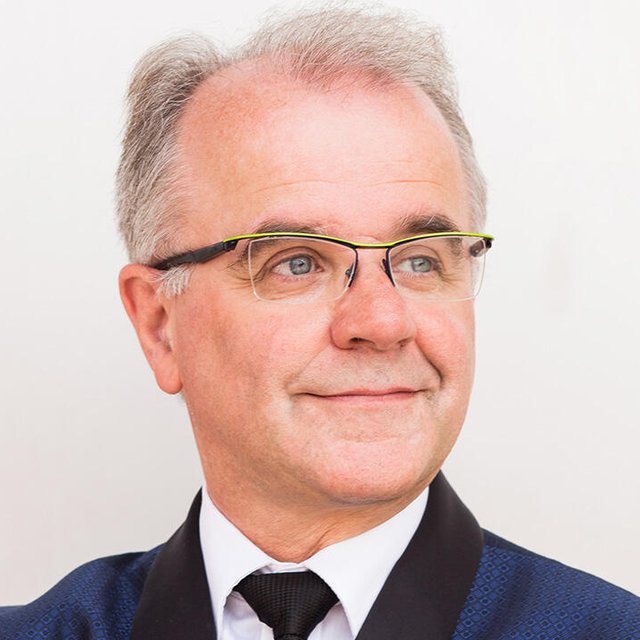
Christopher Bell
Chorus Director
Support The Festival
Violin I
Jeremy Black, concertmaster
Vacant, assistant concertmaster
Trista Wong
Zulfiya Bashirova
Jennifer Cappelli
Injoo Choi
Dima Dimitrova
Erica Hudson
Hyewon Kim
Matthew Lehmann
Jayna Park
Rika Seko
Karen Sinclair
Bonnie Terry
Krzysztof Zimowski
Violin II
Liba Shacht, principal
Vacant, assistant principal
Ying Chai
Ran Cheng
Karl Davies
Likai He
Ann Lehmann
Laura Miller
Cristina Muresan
Kjersti Nostbakken
Irene Radetzky
Jeanine Wynton
Thomas Yang
Viola
Terri Van Valkinburgh, principal
Yoshihiko Nakano, assistant principal
Elizabeth Breslin
Beatrice Chen
Amy Hess
Rebecca Swan
Chloé Thominet
Cello
Walter Haman, principal
Peter Szczepanek, assistant principal
Calum Cook
Larry Glazier
Steven Houser
Eric Kutz
Eran Meir
Double Bass
Colin Corner, principal
Peter Hatch, assistant principal
Andrew Anderson
Christian Luevano
Samuel Rocklin
Chunyang Wang
Chris White
Flute
Vacant, principal
Alyce Johnson
Jennifer Lawson, assistant principal
Piccolo
Jennifer Lawson
Oboe
Mitchell Kuhn, principal
Vacant
Anne Bach, assistant principal
English Horn
Anne Bach
Clarinet
Dario Brignoli, principal
Trevor O’Riordan, assistant principal
Besnik Abrashi
Bass Clarinet
Besnik Abrashi
Bassoon
Eric Hall, principal
Nicole Haywood Vera Tenorio, assistant principal
Vacant
Contrabassoon
Vacant
Horn
Vacant, principal
Stephanie Blaha, assistant principal
Neil Kimel
Brett Hodge
Paul Clifton
Trumpet
David Gordon, principal
Mike Brozick
Vacant, assistant principal
Vacant
Trombone
Daniel Cloutier, principal
Jeremy Moeller, assistant principal
Bass Trombone
Alexander Mullins
Tuba
Andrew Smith, principal
Timpani
Daniel Karas, principal
Josh Jones, assistant principal
Percussion
Josh Jones, principal
Vacant, assistant principal
Doug Waddell
Harp
Kayo Ishimaru-Fleisher, principal
Keyboards
Christopher Guzman
Orchestra Librarian
Eliza Bangert, principal
Grant Park Chorus
* denotes leave-of-absence † 2025 Vocal Fellow
Laura Lynch Anderson
Kristina Bachrach
Madalynn Baez
Megan E. Bell
Alyssa Bennett
Tamara Bodnar
Kylie Buckham
Anna Joy Buegel
Laura Bumgardner
Katherine Buzard
Bethany Clearfield
Nathalie Colas
Carolyne DalMonte
Megan Fletcher
Kaitlin Foley
Saira Frank
Julia Frodyma
Katherine Gray-Noon
Kimberly Gunderson
Alexandra Ioan
Alexandra Kassouf
Darlene Kelsey
Olivia Knutsen
Marybeth Kurnat
Katelyn Lee
Kyuyim Lee+
Rosalind Lee
Veronica Mak
Hannah Dixon McConnell
Marie McManama
Kathleen Monson
Susan Nelson
Evangeline Ng
Máire O'Brien
Alexandra Olsavsky
Laura Perkett
Angela Presutti Korbitz
Alexia Rivera
Veronica Samiec
Emily Sinclair
Molly Snodgrass
Tiana Sorenson
Christine Steyer
Sarah van der Ploeg*
Lydia Walsh-Rock
Sherry Watkins
Emily Amesquita
Melissa Arning
Christina Bernardoni
Angela Born
Bethany Brewer
Julie DeBoer
Leah Dexter
Katrina Dubbs
Stacy Eckert
Margaret Fox
Catarine Hancock
Ruth Ginelle Heald
Sophia Heinz
Miya Higashiyama
Carla Janzen
Amy Allyssa Johnson
Kathryn Kinjo Duncan
Amanda Koopman
Anna Laurenzo
Jeannette Lee
Thereza Lituma
Chelsea Lyons
Victoria Marshall
Jessica McCarthy
Quinn Middleman
Ella Peters
Sarah Ponder
Emily Price
Stephanie Schoenhofer
Suzanne A. Shields
Marissa Simmons
Cassidy Smith
Aidan Spencer
Alannah Spencer
Margaret Stoltz
Carolyn Sundlof Boudreau
Gabrielle Timofeeva López
Elizabeth Vaughan
Corinne Wallace-Crane
A.J. Wester
Debra Wilder
Isabel Yang+
Charles Anderson
Enrico Giuseppe Bellomo
Justin Berkowitz
Madison Bolt
Hoss Brock
Steven Caldicott Wilson
Opal Clyburn-Miller+
John J. Concepción
Micah Dingler
Jared V. Esguerra
Alec Fore
Ace Gangoso
Klaus Georg
Tejas Gururaja
Paul Hunter
Garrett Johannsen
William Johnson
James Judd
Tim Lambert
Tyler Lee
Stephen D. Noon
Marcos Ochoa
Brett Potts
Nicholas Pulikowski
Peder Reiff
Samuel Rosner
Matthew W. Schlesinger
Joe Shadday
Aaron Short
Brian Skoog
Michael St. Peter
Ryan Townsend Strand
Alan Taylor*
Sean J. Watland
Nate Widelitz
Walter Aldrich
Evan Bravos
Matthew Brennan
Michael Cavalieri
Ryan J. Cox
Ed Frazier Davis
Lifan Deng
Matthew Dexter+
Chris DiMarco
Christopher Filipowicz
Dimitri German
Dominic German
David Govertsen
Spencer Greene
Brian Hupp
Jan Jarvis
Jess Koehn
Eric Miranda
Ian Morris
Ian Murrell
John E. Orduña
Wilbur Pauley
Douglas Peters
Jackson Pierzina
Martin Lowen Poock
Ian Prichard
Dan Richardson
Stephen Richardson
Benjamin D. Rivera
Scott Uddenberg
Schyler Vargas
Vince Wallace
Aaron Wardell
Ronald Watkins
Jonathon Weller
Peter Wesoloski
Jonathan Wilson
Chuck Foster
John Goodwin
Kyuyim Lee
Isabel Yang
Opal Clyburn-Miller
Matthew Dexter
